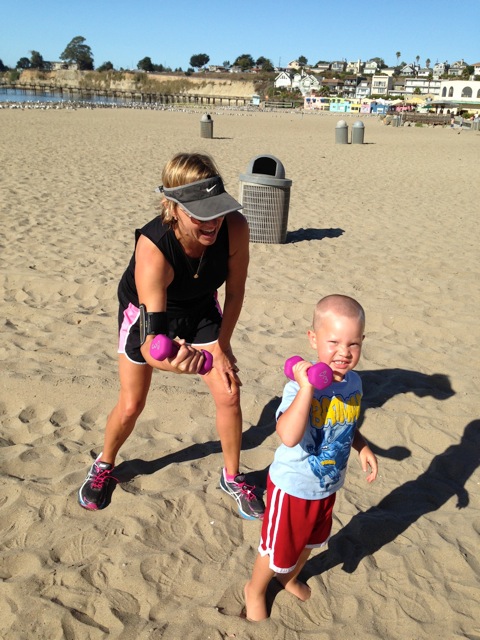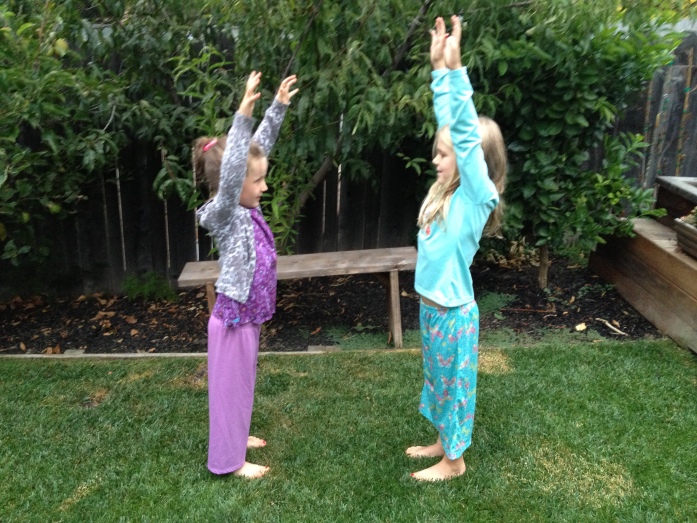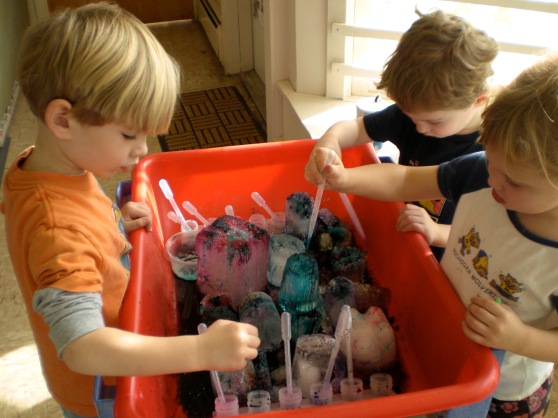I feel very fortunate to live near the ocean in Santa Cruz, CA. It continually inspires me to venture outside and enjoy all that it affords. It is a place of beauty, incredible wonders, and home to the greatest diversity of life on earth. This week, humpback whales can be spotted not far from the beach. They are joining herds of sea lions and flocks of birds to dine on the abundant anchovies that are present in the bay. In the photo below taken by Chris Elmenhurst, you can see a mother humpback teaching her baby calf how to feed on the tiny green fish. The whale mother and her baby will share the strongest of bonds for one year with the mother preparing and strengthening her newborn for the long migration up the coast. It’s common to see a baby trying to perform a good breach over and over and then have mom come up unexpectedly to show junior how it should be done.
While I was watching the humpbacks, I also spotted a mother and son exercising together on the beach. I couldn’t help but notice the correlation between the mother whale with her calf and the mother and son lifting weights. Just as the mother whale role models for her baby, so does a physically active parent role model for her child.
Parents who encourage and endorse physical activities in their own lives are more likely to pass on these good habits to their children. Research shows that children who exercise do better in school, control themselves better, and have fewer behavior issues. More good news is that children who lead active lifestyles are likely to remain active as adults and pass on their healthy lifestyle habits to their own children.
Consider the following benefits of regular physical activity for growing children:
- Promotes healthy growth and development
- Builds strong bones and muscles
- Improves cardiovascular fitness
- Increases flexibility
- Improves balance, coordination and strength
- Assists with the development of gross motor and fine motor skills
- Provides the opportunity to develop fundamental movement skills
- Helps to establish connections between different parts of the brain
- Improves concentration and thinking skills
- Provides opportunities to develop social skills and make friends
- Reduces feelings of depression, stress, and anxiety
- Improves sleep
- Promotes psychological well-being, including higher levels of self-esteem and self-
- concept
Whether you’re a parent or a teacher, be a role model. Show children physical activity is important by enthusiastically participating in it!













